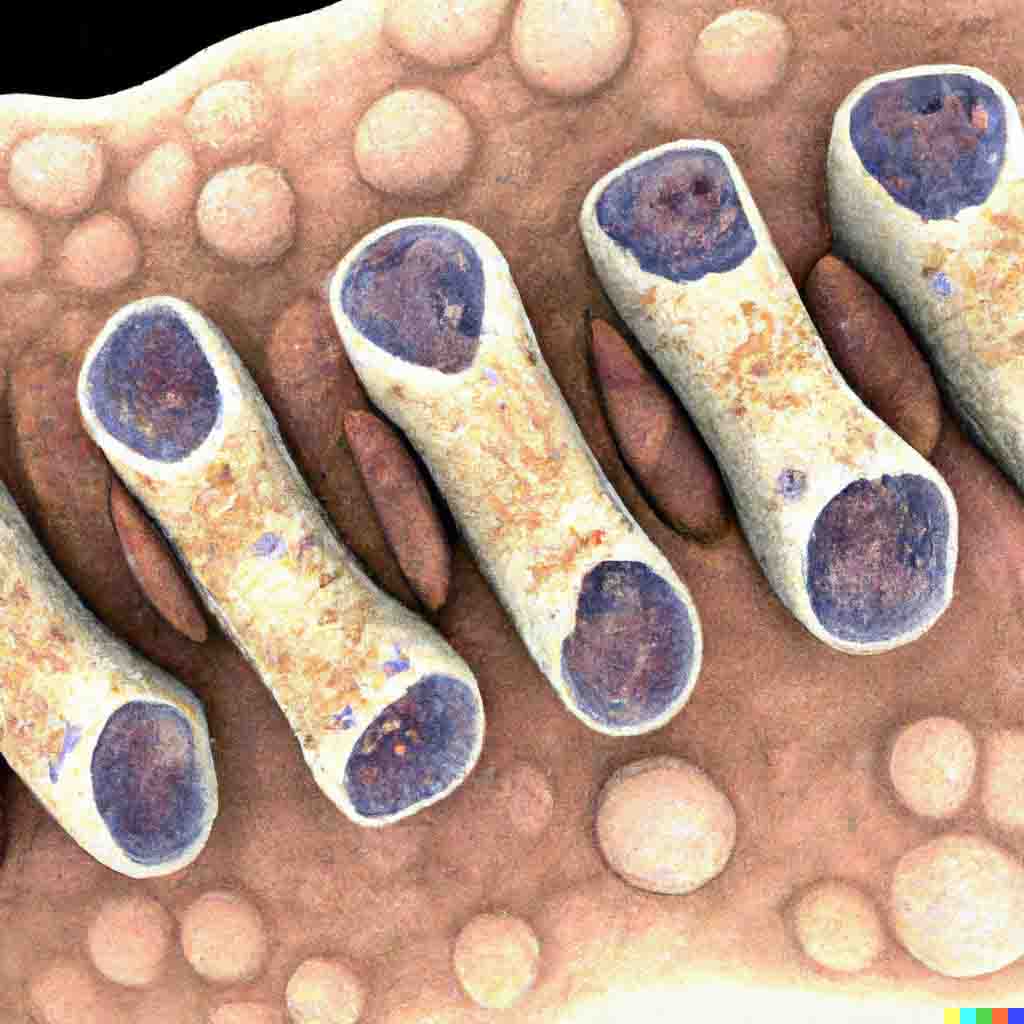Bone tissue is made up of four different types of bone cells; osteoblasts, osteocytes, osteoclasts, and osteoprogenitor cells. Together these cells comprise the compact and spongy bone layers and work together to maintain the mineral composition and structure of the bones.
What Are Bone Cells?
Bone cells are the cells that make up bone tissue. Bone is a highly specialized connective tissue with three main functions; to protect the internal organs, to create a rigid frame for muscular movement, and to store minerals such as calcium and phosphorous.
Types of Bone Tissue
Compact Bone Tissue
Compact bone (AKA cortical bone tissue) is the hard material that forms the external layer of bones. Its main function is to strengthen the bones and protect the spongy tissue beneath.
Spongy Bone Tissue
Spongy bone (AKA cancellous bone tissue) forms the inner layer of all bones. It is lighter and less dense than compact bone tissue, and its key functions are to lend strength and flexibility to the bones and to act as a shock absorber in the event of trauma. As it is lighter than compact bone tissue, the spongy layer also reduces the overall weight of the skeleton.
Types of Bone Cells
Bone tissue is comprised of four types of cells: osteoblasts, osteoclasts, osteocytes, and osteoprogenitor cells. Each of these cells has a unique function and, together, they maintain homeostasis of the bone tissue via bone remodeling (the replacement of old bone tissue with new bone tissue). In doing so, they regulate the structure and function of bone tissue.

Functions of Bone Cells
Osteoblasts
Osteoblasts are cuboidal cells arranged in a densely packed layer along the bone surface. They account for 4-6% of all bone cells, and their main function is to form new bone tissue. Osteoblasts are specially adapted for this role, with abundant rough endoplasmic reticulum and a large Golgi apparatus for plentiful protein production.
These cells secrete a variety of substances, including collagen, various proteins, and calcium salts. Together, these materials form the bone matrix, a complex framework that supports the structure of the bones. The bone matrix also plays a key role in bone homeostasis, as it releases molecules that influence the activity of bone cells and, therefore, the remodeling of bone tissue.
Osteoblasts do not divide. Over time, the bone matrix grows around them and becomes calcified, trapping the cells in the middle. This causes the osteoblast to change its structure and become a mature bone cell called an osteocyte.
Osteocytes
The majority of bone cells are osteocytes, which are essentially osteoblasts that have become surrounded and trapped by the substances they secrete. Each osteocyte is found in a small space (called a lacuna) that is surrounded by bone tissue.
Osteocytes account for 90-95% of the cells in bone tissue. Like osteoblasts, they do not divide, but they have a long lifespan of up to 25 years.
Osteocytes have several important functions in maintaining the mineral composition of bone tissue. They are capable of depositing and reabsorbing bone and will signal other osteocytes in the event of even slight damage to the bones. They regulate the activity of osteoblasts and osteoclasts and manage the bone’s calcium reservoir. Therefore, osteocytes, play a central role in bone remodeling.
Osteocytes communicate with one another via long channels within the bone matrix called canaliculi, which they also use for the transfer of nutrients and waste products.
Osteoclasts
Osteoclasts are large cells whose main function is to dissolve and reabsorb bone tissue. They are found on the surface of bone tissue and originate from white blood cells (monocytes and macrophages) rather than from other bone cells.
Osteoclasts constantly break down and reabsorb old bone tissue, while osteoblasts form new bone tissue. Together, these two cells control the gradual reshaping of the bones.
Osteoprogenitor cells
Osteoprogenitor cells (AKA osteogenic cells) are the stem cells found in bone tissue. Specialized bone cells (i.e., the osteoblasts and osteocytes) originate from osteoprogenitor cells in the bone marrow. Osteoclasts do not develop from osteogenic cells; instead, they originate from blood stem cells in the bone marrow.

